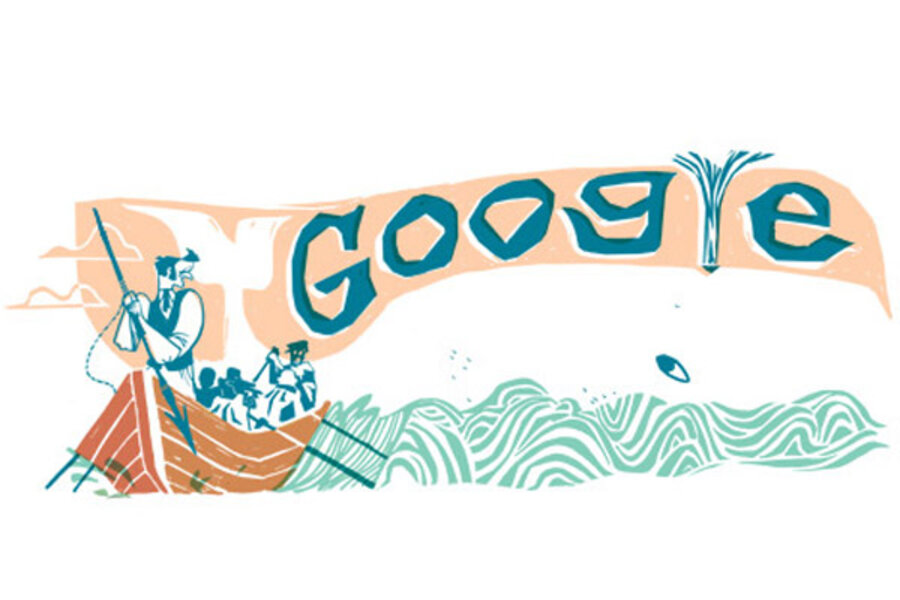Herman Melville books: Remembering the author of 'Moby Dick'
The Google homepage today depicts a white whale, a choppy sea, and a skiff captained by a one-legged harpooner. The doodle, of course, is an homage to "Moby Dick," which was first published 161 years ago, by Herman Melville. So who was Melville, exactly? Only one of the titans of modern literature – and a writer responsible, in the words of Nathaniel Philbrick, for "what is generally considered the greatest American novel ever written."
Melville was born in 1819, in New York, the third of eight children. As a boy, he was hired to help staff a ship running between the United States and Liverpool, England. In 1841, he signed on with the crew of the whaling vessel Acushnet and spent several months in the Pacific. He deserted in the Marquesas Islands, in modern-day Polynesia, and explored Tahiti and Hawaii, before sailing back to the Eastern seaboard.
Later, Melville would mine his experience in the Pacific for the novels "Typee," "White-Jacket," and "Omoo: A Narrative of the South Seas." "Omoo" and "Typee," particularly, sold well. In 1850, Melville moved with his young wife, Elizabeth, to a farm in Pittsfield, Mass. He raised a small family – he and Elizabeth had four children in all – and set to work on the long novel that would become "Moby Dick."
During that time, he befriended the writer Nathaniel Hawthorne, who lived nearby – and to whom Melville eventually dedicated "Moby Dick." Hawthorne encouraged his younger friend, and may even have helped Melville shape the content and tone of the novel. After Hawthorne praised "Moby Dick" – the story of a white sperm whale and his pursuer, the one-legged Captain Ahab – Melville wrote him a letter that burbles over with giddy happiness.
"A sense of unspeakable security is in me this moment, on account of your having understood the book," Melville declared. "I have written a wicked book, and feel spotless as the lamb. Ineffable socialities are in me. I would sit down and dine with you and all the gods in old Rome's Pantheon."
"Moby Dick" was published in England in October of 1851 and in the US the following month. Despite Melville's high hopes for the novel, the book was slow to catch on. According to PBS, during Melville's lifetime, the book sold only 3,000 copies.
By comparison, "Typee" sold 6,000 copies in two years.
Melville wrote a few more novels, including the very fine "Pierre," but he struggled to attain the commercial success of his early career. In 1856, Melville visited Hawthorne in England, where Hawthorne was working at the American consulate. Hawthorne was shocked by the state of his old friend.
Melville, Hawthorne concluded, "no doubt has suffered from too constant literary occupation, pursued without much success, latterly; and his writings, for a long while past, have indicated a morbid state of mind... [Melville] informed me that he had 'pretty much made up his mind to be annihilated'; but still he does not seem to rest in that anticipation; and, I think, will never rest until he gets hold of a definite belief."
Back in the US, Melville temporarily lectured to support his family, and in 1863, took the extraordinary step of moving back to New York to become a customs inspector. He died in 1891, at the age of 72. It was only many years later, in the early 20th century, that a group of scholars and writers helped bring to "Moby Dick" the canonical status that it enjoys today.





